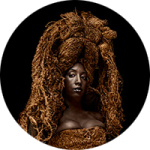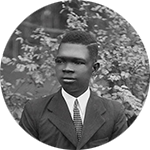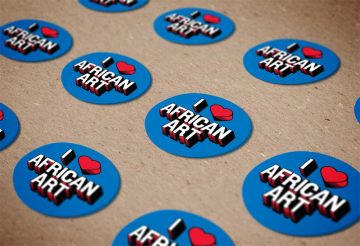John Akomfrah: Five Murmurations
Internationally renowned artist and filmmaker John Akomfrah addresses the global COVID-19 pandemic, murder of George Floyd, and worldwide protests in support of Black Lives Matter in this visual essay of our times. Drawing upon an extensive archive of images that mix iconic works of art with scenes shot and gathered in the globally fraught 18-month period between 2019 and 2021, Five Mumurations considers Akomfrah’s insights into post-colonialism, diasporic experience, and memory.
From the Deep: In the Wake of Drexciya with Ayana V. Jackson
For her first monographic exhibition, acclaimed photographer Ayana V. Jackson was inspired by the Detroit-based 1990s techno band Drexciya (musicians James Stinson and Gerald Donald) whose albums imagined a mythical aquatopia populated by descendants of pregnant African women thrown (or who jumped) overboard into the Atlantic Ocean during the Middle Passage. In this exhibition, Jackson expands her practice to include animation, immersive video, installation, sound, and scent. She creates a series of haunting, yet profoundly beautiful and empowering encounters that draw upon African water spirits from Senegal to South Africa.
Before Nollywood … The Ideal Photo Studio
Open
Before Nollywood . . . The Ideal Photo Studio is a living exhibition and an ongoing research and photography project that explores the lives of patrons from the Ideal Photo Studio and a history of Benin City and its community through the photographs of Solomon Osagie Alonge. We are seeking your help in naming people in the Ideal Photo Studio portraits, and inviting you to share personal stories and memories of your childhood, friends, family, social life, and community in Benin City, Nigeria, at the Tapestry of Benin Memories wall.
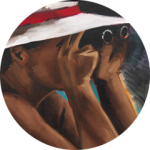
Visionary: Viewpoints on Africa’s Arts
Ongoing
Visionary ideas propel the greatest human accomplishments.
Visionary: Viewpoints on Africa’s Arts, the National Museum of African Art’s most recent, large-scale presentation of its collection, is the first to offer broad thematic connections between artworks across the spectrum of time, place, and medium. Visionary aims to get visitors to look with fresh and focused insight and, in so doing, to see works of art—and each other—with new eyes.
#VisionaryAfrica
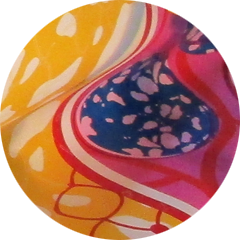
Wind Sculpture VII
Ongoing
Commissioned from internationally renowned artist Yinka Shonibare MBE, the installation of Wind Sculpture VII at the entrance to our museum promises to mark a new landmark of public art on the National Mall. The ship-sail shapes of Shonibare’s Wind Sculpture series, painted to appear like his trademark wax-print cloth material, evoke cross-continental connections—in history, in trade, in politics, in ideas, and in contemporary art.
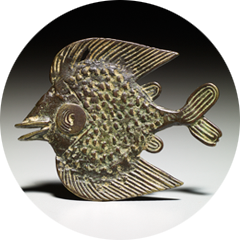
Currents: Water in African Art
Ongoing
Water is in all of us—to live, we need water to drink. Featuring artworks from the museum’s permanent collection, this exhibition proves that water is one of most potent forces on earth. Its currents flow through myths, metaphors, and rituals. Diverse and wide-ranging in material, time period, style, and intended use, the objects in this exhibition span the continent of Africa to explore the importance of water for both practical and artistic purposes.
Online exhibitions
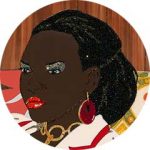
Backtalk: Artists on Native, African, and African American Stereotypes
Ongoing
Backtalk: Artists on Native, African, and African American Stereotypes is an online exhibition that examines how nine artists interrogate and engage racial and cultural stereotypes in their creative practice. Part of a collaborative investigation of the persistence of racial and cultural stereotypes, Backtalk is grounded in the vision of Johnnetta Betsch Cole, director emerita of the National Museum of African art, to explore stereotypes across cultures.
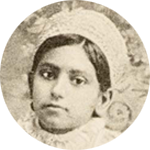
Sailors and Daughters: Early Photography and the Indian Ocean
Ongoing
The Connecting the Gems of the Indian Ocean: From Oman to East Africa project is proud to present Sailors and Daughters: Early Photography and the Indian Ocean World, the Museum’s first-ever online exhibit made possible by a gift from the Sultan Qaboos Cultural Center. Sailors and Daughters reveals the expansive maritime societies of Zanzibar, the east African coast, and Persian Gulf. From the 1840’s, cameras traced the international migrations of traders, sailors, sons, and daughters through Indian Ocean ports, continuing trade that dates back over five millennia. For instance, a highlight of the exhibition brings together early images by German photographer Hermann Burkhardt of Oman in 1904, which resemble photographs captured in Stone Town. East African cities flourished as hubs of both land and sea trade routes, which extended to the central African interior, the Middle East, Indian Ocean islands, western India and the Far East.

